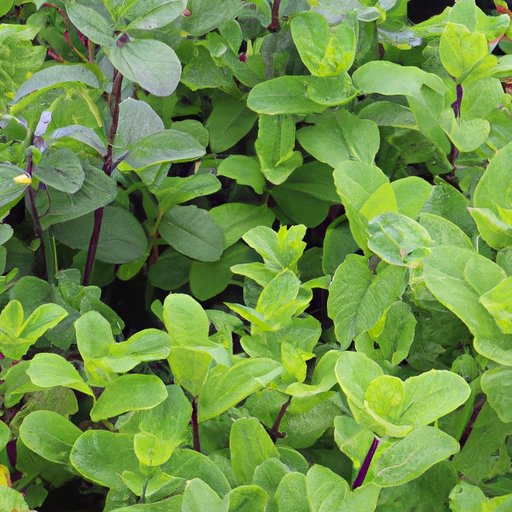
I. Introduction
Mint is a versatile herb that can be added to various dishes and drinks. It offers health benefits and is easy to propagate. This article will cover everything you need to know about growing and harvesting mint.
II. Starting with the basics
Choosing the right soil is important for growing mint. Use well-draining, fertile soil with a pH between 6.0 to 7.0. Mint can be grown in a container or garden bed. When planting in a container, choose a pot with a diameter of at least 12 inches and make sure it has drainage holes. Find a location that offers at least 6 hours of sunlight and shelter from strong winds. Plant your mint sprigs or cuttings at a depth of 1-2 inches, 6 inches apart. Ensure to water the soil gently until it’s lightly moist.
III. Watering and fertilizing techniques
Mint plants require frequent watering to maintain moist soil but not soggy soil. Give 1 to 2 inches of water per week, depending on the weather conditions. Avoid overhead watering that can cause water to collect on the leaves. Fertilize your mint plant regularly with a balanced fertilizer, once every four weeks. Avoid nitrogen-rich fertilizers that can promote leafy growth at the expense of flavor.
IV. Propagating mint
Mint can be propagated by seeds or cuttings. However, propagating through cuttings is the easiest and fastest way. Snip a 4-6 inch stem from a mature, healthy plant just below a node and remove any lower leaves. Place the cutting in a glass of water where it will get partial sun and mist with water daily. Once the roots are about 1-2 inches long, transfer the cutting to a potting mix. Starting seeds can also be done in a potting mix planting media in #2 nursery pots for larger seedlings. Keep the soil moist until the seedlings have grown above the rim of the pot.
V. Pruning and harvesting
Pruning your mint plant helps to promote new growth and prevents overgrowth. Cut back the stems to encourage branching and to avoid legginess. Harvest mint when the plant is at least 6 inches in height. Snip off the leaves near the stem for continued growth or harvest stems with leaves from the plant when needed. Mint leaves are best used fresh, but they can be refrigerated for a few days or frozen for later use.
VI. Troubleshooting common issues
A few pests and diseases can affect your mint plants, including spider mites, caterpillars, and fungal infections. To prevent these pests and diseases, keep the soil moist and ensure proper drainage. Control overgrowth by maintaining a pot size that is practical for the available space of the container or garden bed. Weeding regularly to avoid competition for resources and prevent pests hiding places, and prevent damage. Use natural insecticides, like neem oil or insecticidal soap when necessary.
VII. Creative uses for fresh mint
Fresh mint is a versatile herb that can be used in numerous ways. It can be added to cocktails, teas, and even salads. Mint offers aromatherapy benefits and natural remedies like in the relief of digestive issues. Fresh mint can be stored by drying or freezing it for later use. Cut the stems and dry leaves on a rack. Store the dry leaves in an airtight container. Freeze fresh mint leaves in a zip lock bag. Use these preserved mint leaves later for preparations that require mint flavor.
VIII. Preserving fresh mint
Preserving fresh mint can be accomplished by drying or freezing it for later use. Cut the stems and dry leaves on a rack. Store the dry leaves in an airtight container. Freeze fresh mint leaves in a zip lock bag. Use these preserved mint leaves later for preparations that require mint flavor, like ice cream, yogurt, or a refreshing drink.
IX. Conclusion
Mint is a lovely herb that is easy to grow and propagate either indoors or outdoors. Keep the plants appropriately watered and fertilized, prune regularly, and take care to prevent pest infestations and diseases. Enjoy the numerous culinary uses of fresh mint, benefit from using it in natural remedies or aromatherapy, and by preserving the fresh herb with proper storage techniques.





